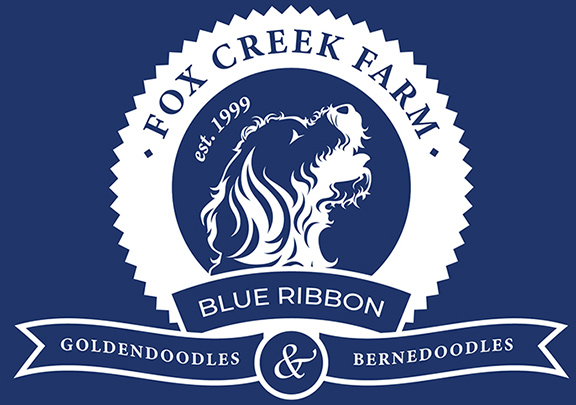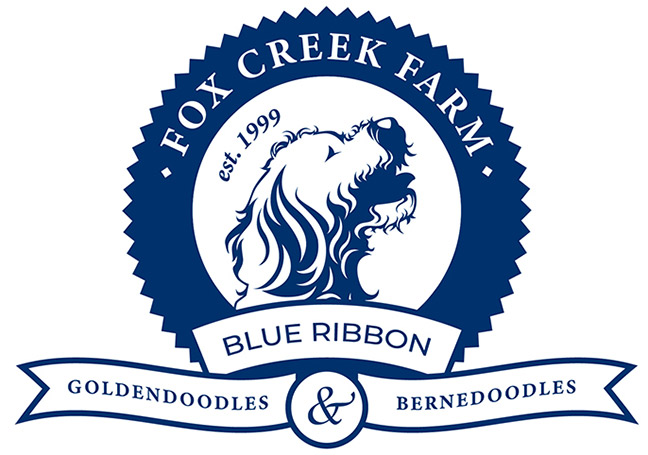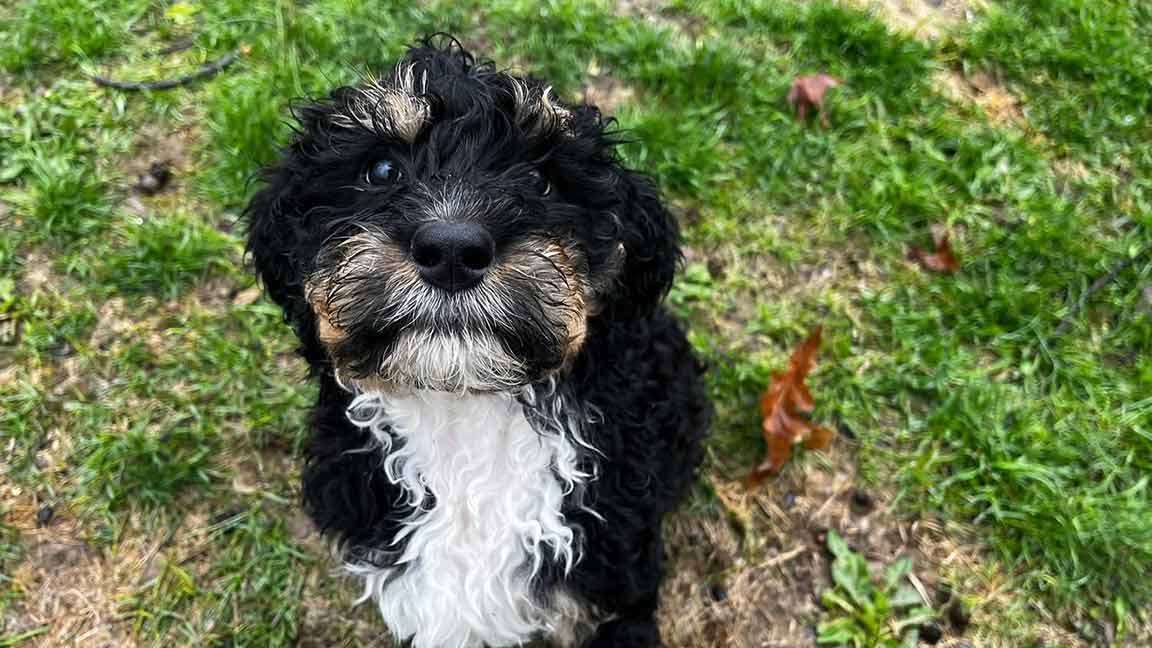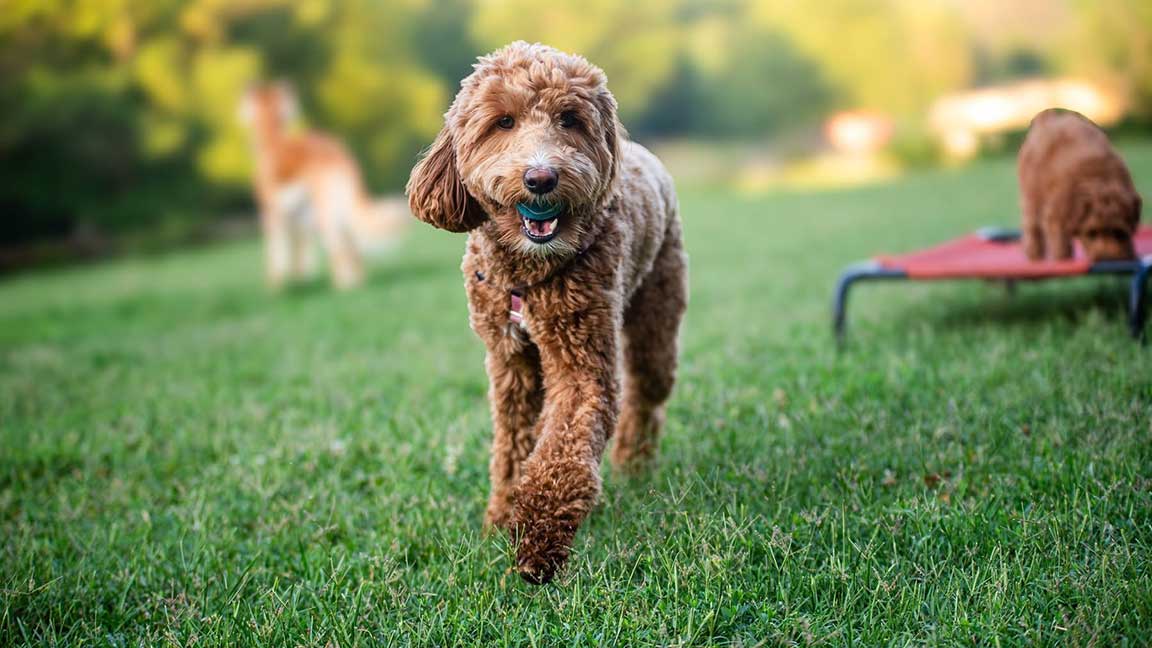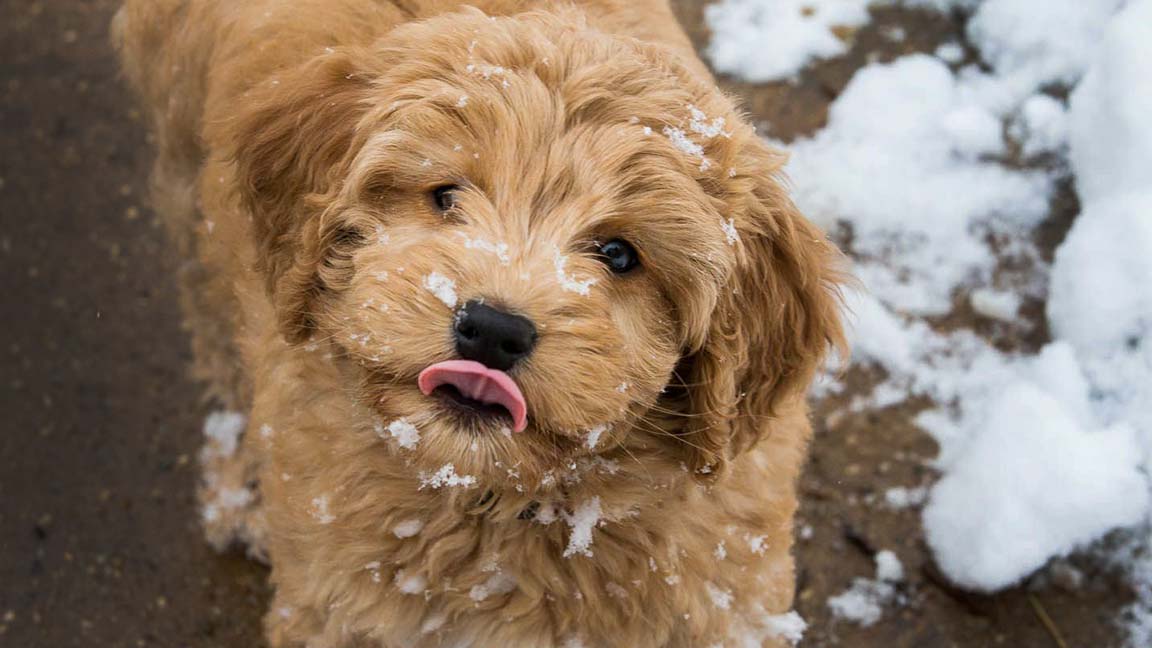
All about the Petite Goldendoodle
The Petite Goldendoodle, a jewel in the realm of designer breeds, represents a harmonious blend of the gentle Golden Retriever and the sprightly Miniature Poodle. This crossbreed inherits the best traits from both parents, resulting in a creature of remarkable intelligence, warmth, and a hypoallergenic coat that appeals to families and individuals alike. As I delve into the essence of the Petite Goldendoodle, it’s important to highlight not just their physical attributes but also the joy and companionship they bring into our lives.
Introducing the Petite Goldendoodle
My journey with the Petite Goldendoodle began the moment I laid eyes on one of these fluffy bundles of joy. Their petite size, combined with an almost magical coat that ranges from straight to curly, captivated me. These dogs carry an air of sophistication and an innate ability to connect with humans on a deeply emotional level. The story behind the Petite Goldendoodle is as fascinating as the breed itself. Originally bred for those seeking the Goldendoodle charm in a smaller package, these dogs have carved their niche as adaptable, friendly companions that fit wonderfully into various lifestyles, from the bustling city apartment to the sprawling countryside home.
What’s a Petite Goldendoodle?
Understanding what constitutes a Petite Goldendoodle is crucial for anyone considering adding this breed to their family. They are the result of carefully breeding a Golden Retriever with a Miniature Poodle, followed by additional generations of downsizing, sometimes involving multi-generational crosses to stabilize the petite size and desirable traits. Typically weighing between 15 to 25 pounds, they exemplify the ideal balance between the playfulness of their Golden Retriever ancestry and the intelligence of the Poodle. This size not only makes them incredibly manageable for a wide range of households but also amplifies their charm as they navigate the world with an effortless grace.
The story of the Petite Goldendoodle is not just one of aesthetic appeal but also of the breed’s intrinsic qualities such as their good-natured temperament, making them excellent pets for families, singles, and seniors alike. Their intelligence and eagerness to please not only facilitate training but also create a strong bond between the dog and their human companions. This connection is further enriched by their coat types, ranging from straight to curly, each requiring specific grooming techniques to maintain their lustrous appearance.
In preparing to welcome a Petite Goldendoodle into your life, understanding their care needs, from their diet and exercise regimen to grooming and training, is paramount. This breed’s adaptability and intelligence make them receptive to positive reinforcement training techniques, fostering a well-behaved and sociable pet. Health testing of the parent dogs plays a crucial role in preventing common concerns and ensuring the longevity and happiness of your furry friend.
As we progress through this exploration, we will uncover more about the nuances of living with a Petite Goldendoodle, including their cost, size expectations, and where to find reputable breeders committed to genetic health testing. By weaving together these threads of information, we aim to provide a comprehensive guide for anyone captivated by the allure of these delightful companions.

The Story Behind the Petite Goldendoodle
The narrative of the Petite Goldendoodle unfolds like a carefully crafted tale, born from a desire to merge the affable nature of the Golden Retriever with the agility and intellect of the Miniature Poodle. This quest led to the creation of a dog that embodies the best of both worlds, tailored to fit into the lives of those who might find a standard sized Goldendoodle too large for their living situation. This breed’s genesis speaks volumes about the human desire for companionship in a form that aligns with our diverse lifestyles and living arrangements. Their popularity surged not only because of their adaptable size but also due to their remarkable temperament and low-shedding coats, making them particularly appealing to families and individuals with allergies.
Are Petite Goldendoodles good pets?
Yes, without a shadow of a doubt, Petite Goldendoodles make exceptional pets. Their intelligence and friendly demeanor make them excellent companions for children and adults alike. They inherit a gentle nature from the Golden Retriever side, while their Poodle ancestry bestows upon them a keen intellect and a playful spirit. This combination makes them not just pets but integral members of the family, capable of providing emotional support and unconditional love. Their size is particularly advantageous for those residing in apartments or homes with limited space, offering the joy of pet ownership without the logistical challenges posed by larger breeds.
Petite Goldendoodle vs Mini Goldendoodle
While both the Petite and Mini Goldendoodles share a common lineage, the primary distinction lies in their size. The Petite Goldendoodle is generally smaller than the Mini Goldendoodle, weighing in at 15-25 pounds, whereas the Mini can range up to 35 pounds. This subtle difference makes the Petite an ideal choice for those seeking the smallest possible doodle that still retains the charming characteristics of the Goldendoodle breed. Despite their size difference, both variations share similar health, grooming, and exercise needs, making them equally delightful companions.
Petite Goldendoodle Generations
Understanding the generations of Petite Goldendoodles is key to comprehending their characteristics and what makes each one unique. From the F1 generation, which is a direct cross between a Golden Retriever and a Miniature Poodle, to the F1B generation (a backcross in which a Petite Goldendoodle is bred back with a Poodle), and beyond to the F2 and multigen generations, each step in the breeding process is designed to enhance specific traits. These generational differences can affect not only the dog’s coat type and shedding tendencies, but also their overall temperament and health predispositions. Breeders carefully select each pairing to promote the healthiest and most desirable traits in their puppies.
Petite Goldendoodle Coat Types
The coat of a Petite Goldendoodle can vary widely, from straight to wavy to curly, each with its own unique charm and grooming needs. The straight-coated Petite Goldendoodle often resembles the Golden Retriever more closely, with a longer coat that requires regular brushing to prevent matting. Wavy-coated doodles offer a happy medium, with manageable grooming needs and the signature doodle appearance. The curly coat, mirroring the Poodle’s, has the highest maintenance. Regardless of the coat type, regular grooming is essential to maintain their health and appearance, emphasizing the importance of establishing a grooming routine from a young age.
 Caring for a Petite Goldendoodle
Caring for a Petite Goldendoodle
Caring for a Petite Goldendoodle encompasses more than just meeting their physical needs; it’s about nurturing their emotional and mental well-being too. Their diet should be tailored to their size, age, and activity level, ensuring they receive all the necessary nutrients to thrive. An exercise plan is paramount, blending both physical activities like walks and playtime with mental stimulation through training and puzzles. This not only keeps them physically fit but also mentally sharp and engaged. Grooming is another crucial aspect, involving regular brushing, bathing, and professional grooming sessions to keep their coat in pristine condition. Attention to dental health and regular vet check-ups are also vital in maintaining their overall health and happiness.
The Petite Goldendoodle Diet
The diet of a Petite Goldendoodle should be carefully considered to ensure it meets all their nutritional requirements. High-quality dog food, rich in protein and low in fillers, supports their energy levels and maintains their health. Given their petite size, portion control is essential to prevent obesity, a common issue that can lead to other health problems. Fresh water should always be available, and treats should be given sparingly, used more as a tool for training rather than a dietary staple. Consulting with a veterinarian can provide personalized guidance tailored to your dog’s specific needs.
Exercise Plan
An effective exercise plan for a Petite Goldendoodle combines daily walks with playtime and mental stimulation. Despite their small size, they possess a lively spirit and require regular physical activity to stay healthy and content. Short walks twice a day, coupled with play sessions in a secure area, allow them to burn off energy. Integrating training sessions into playtime not only exercises their body but also their mind, keeping them engaged and preventing boredom. It’s important to adjust the intensity and duration of exercise based on their age, health, and energy level to ensure it’s enjoyable and beneficial.
Grooming a Petite Goldendoodle
Grooming a Petite Goldendoodle is an essential part of their care routine, vital for maintaining their coat’s health and their overall comfort. Depending on their coat type, they may require daily brushing to prevent tangles and mats, especially for those with curlier coats. Bathing should be done every few weeks or as needed, using a dog-specific shampoo that won’t strip their coat of natural oils. Professional grooming every 6-8 weeks can help manage their coat length, prevent ear infections by cleaning their ears, and keep their nails at a comfortable length. Starting grooming habits early can help your Petite Goldendoodle become accustomed to the process, making it a positive experience for both of you.
Training a Petite Goldendoodle
Training a Petite Goldendoodle can be a rewarding experience, thanks to their eagerness to please and high intelligence. Starting training early is key, focusing on basic commands, potty training, and socialization. Positive reinforcement techniques, such as treats and praise, prove effective in encouraging good behavior. Consistency and patience are crucial, as is providing varied training sessions to keep them interested and engaged. Socialization with other dogs and people helps in developing a well-adjusted, friendly pet who is comfortable in a variety of settings. Advanced training or dog sports can also be beneficial, providing mental stimulation and strengthening the bond between you and your Petite Goldendoodle.
Health Testing to Prevent Concerns of Petite Goldendoodles
Health testing is an essential aspect of responsible breeding practices, aimed at preventing genetic health concerns that may affect Petite Goldendoodles. Reputable breeders conduct comprehensive health screenings for both parent breeds, including tests for luxating patellas, eye conditions, and heart diseases, among others. This proactive approach helps to ensure the puppies are as healthy as possible, reducing the risk of inherited conditions. As a potential owner, it’s crucial to inquire about the health testing of the puppy’s parents and to see documentation as proof. Regular veterinary check-ups should continue throughout your dog’s life to monitor and maintain their health, catching any issues early on.
How Much Are Petite Goldendoodles?
The cost of a Petite Goldendoodle can vary significantly based on factors such as the breeder’s reputation, location, and the puppy’s lineage and health testing. Prices tend to differentiate based on many factors which can be discussed with your breeder. It’s important to remember that the initial cost is just the beginning, as caring for any dog comes with ongoing expenses for food, grooming, vet care, and other necessities. Investing in a Petite Goldendoodle from a reputable breeder might come with a higher price tag but can ultimately be cost-saving by minimizing future health-related expenses.
How Big Do Petite Goldendoodles Get?
Petite Goldendoodles are bred for their smaller size, typically weighing between 15 to 25 pounds and standing around 12 to 14 inches tall at the shoulder when fully grown. Their size makes them perfectly suited for a variety of living situations, from apartments to homes with yards. It’s worth noting that due to the nature of crossbreeding, there can be some variation in size even within the same litter, so discussing size expectations with the breeder is advised.
Where Do You Find Genetically Health Tested Petite Goldendoodles?
Finding a reputable breeder who prioritizes genetic health testing is crucial when looking for a Petite Goldendoodle. Research is key; look for breeders who are transparent about their breeding practices, including health testing of the parent dogs. Reputable breeders should be willing to share all health certificates and testing results with potential buyers. Additionally, visiting breeder networks, discussion groups, and breeder directories can help you connect with those who meet these high standards. Remember, a good breeder is also interested in ensuring their puppies go to loving, prepared homes.
Why Are Petite Goldendoodles the Perfect Companion?
Petite Goldendoodles earn their status as the perfect companions through their unique blend of characteristics. Their manageable size, friendly and intelligent nature, and low-shedding coats make them adaptable to various lifestyles and living situations. They thrive on human interaction and form strong bonds with their families, making them excellent emotional support animals and companions. Their versatility and trainability also make them suitable for a range of activities, from leisurely walks to more energetic adventures.
Environmental Enrichment for Petite Goldendoodles
Ensuring your Petite Goldendoodle’s environment is enriched with stimulating activities and toys can significantly enhance their quality of life. Providing a variety of toys, including puzzle toys that challenge them mentally, can keep them entertained and prevent boredom. Regular socialization, exposure to different environments, and introducing new activities can help keep their minds active and engaged.
The Importance of Socialization
Socialization is crucial for developing a well-rounded, confident Petite Goldendoodle. Exposing them to various people, animals, environments, and experiences from a young age helps them become adaptable and reduces fearfulness. Well-socialized dogs are generally more outgoing and less prone to anxiety and aggression.
Supporting Your Petite Goldendoodle’s Mental Health
Just like humans, Petite Goldendoodles benefit from support for their mental health. Consistent routines, regular exercise, and mental stimulation contribute to their overall well-being. Providing love, companionship, and reassurance, especially during stressful situations, can help maintain their mental health.
In conclusion, the journey of bringing a Petite Goldendoodle into your life is filled with joy, companionship, and a bit of adventure. From understanding their origins and unique qualities to ensuring their health and happiness through proper care and training, these delightful dogs have so much to offer. By choosing a reputable breeder, being prepared for the responsibilities of dog ownership, and embracing the journey with open arms, you’ll find that a Petite Goldendoodle can indeed become your perfect companion.
FAQ On Petite Goldendoodles
Q: What’s the smallest size petite goldendoodle?
A: The smallest Petite Goldendoodles typically weigh between 15 to 20 pounds and stand about 12 to 14 inches tall at the shoulder. However, sizes can vary slightly due to genetics.
Q: Where can I find a Petite Goldendoodle breeder near me?
A: To find a reputable Petite Goldendoodle breeder near you, start by searching online for breeders who specialize in this breed and prioritize genetic health testing. Checking with the Goldendoodle Association of North America (GANA), the only Goldendoodle kennel club to date, is a great place to start as they have a list of approved breeders that complete the necessary health testing on their parent dogs.
Q: What’s the lifespan of the Petite Goldendoodle?
A: The lifespan of a Petite Goldendoodle is typically around 13 to 17 years. Proper care, nutrition, and regular veterinary check-ups can contribute to a long and healthy life.
Q: Are there health issues with Petite Goldendoodles?
A: Like all breeds, Petite Goldendoodles can be predisposed to certain health conditions inherited from their parent breeds, such as luxating patellas, von Willebrand’s disease, and eye disorders. Choosing a breeder who conducts comprehensive health testing can help reduce the risk of these issues.
Q: Are Petite Goldendoodles non-shedding?
A: Petite Goldendoodles are considered low-shedding, especially those who carry two furnishing genes. However, no dog is completely non-shedding. Regular grooming helps manage loose hair and dander.
Q: Are petite goldendoodles hypoallergenic?
A: While no dog is 100% hypoallergenic, Petite Goldendoodles with two furnishing genes are often suitable for individuals with mild allergies due to their minimal shedding. Personal exposure is the best way to gauge compatibility.
Q: Do Petite Goldendoodles bark a lot?
A: Petite Goldendoodles are generally not excessive barkers. They may bark to alert their families of visitors or unusual noises but are typically well-mannered. Training and socialization from a young age can help manage barking behavior.
Q: Do breeders do Puppy Culture with Petite Goldendoodles?
A: Many ethical breeders incorporate Puppy Culture or similar socialization and training programs into their breeding practices. These programs help ensure that puppies are well-adjusted, confident, and ready for their forever homes.
Q: Can I get an 8-week-old Petite Goldendoodle?
A: Yes, puppies are usually ready to go to their new homes at about 8 weeks of age, after they have been weaned and have received initial vaccinations. It’s important to follow the breeder’s guidance on the best time to bring your puppy home.
